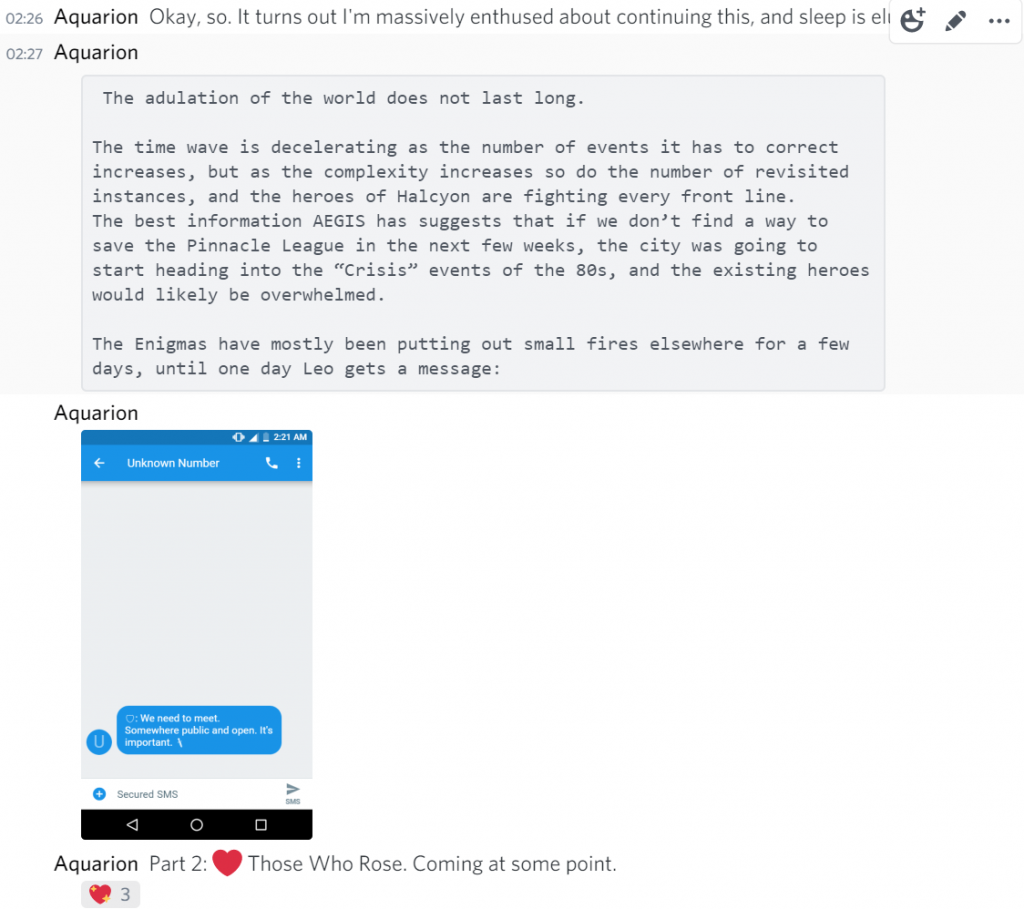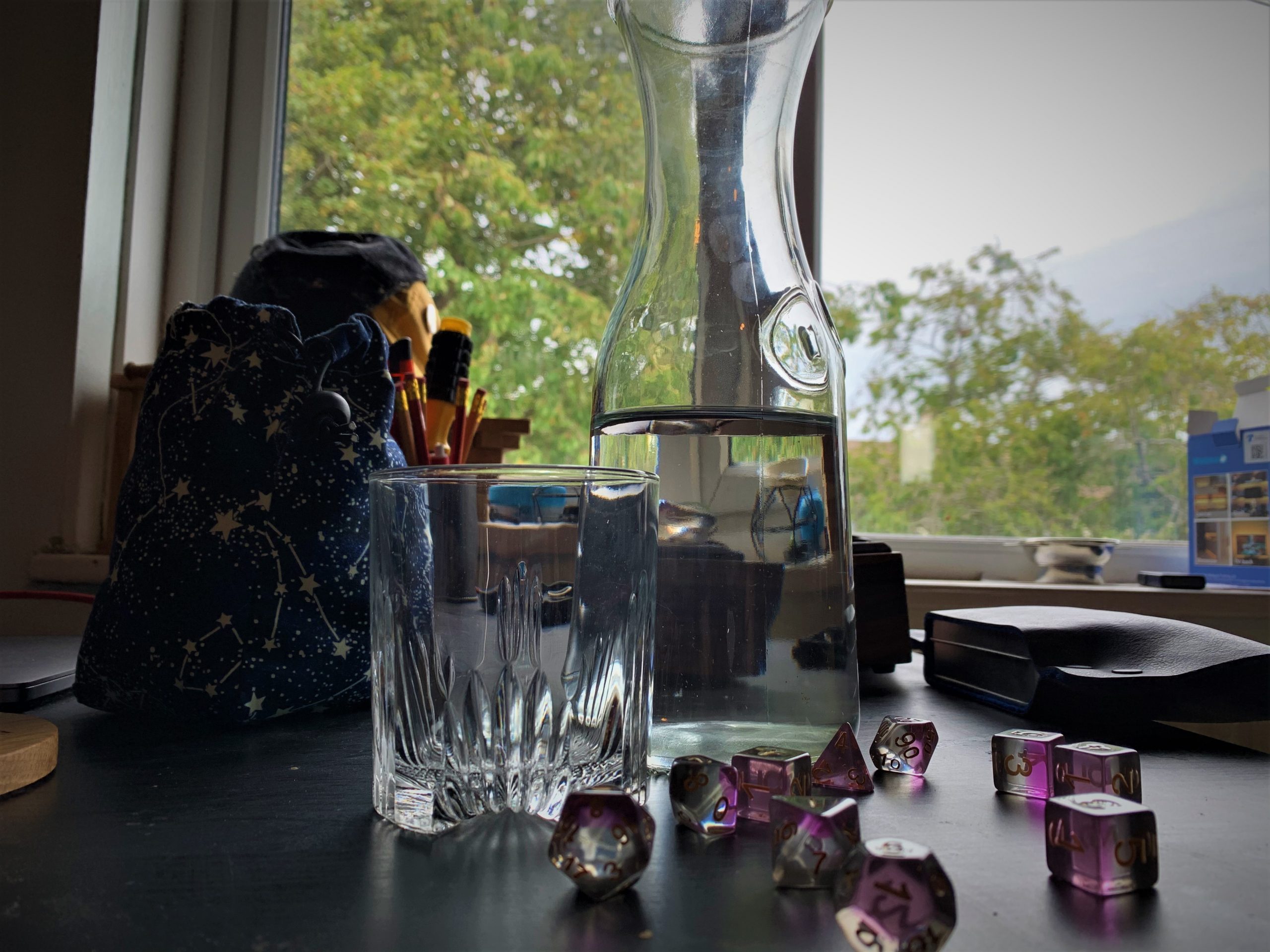During Lockdown I’ve been doing a lot more RPGs and GMing than before, most recently, I ran a one-shot of Masks: A New Generation for friend Robin, and I’m going to talk about the process of putting it together, partly because writing stuff down helps me internalise it, and partly because it helps me stay present in the process and do things deliberately, and therefore maybe repeatably.
Plus, evidence suggests people like this kind of thing.
Last week I sent Robin a message offering to run a one-shot RPG game as a birthday present. It’s something I’ve done before, and something I enjoy doing for people. I’ve got far more ideas than time, and one-shots are a way of getting the New Thing energy boost without commiting to a campaign, plus I want more experience in putting one-shots together. But mostly, I enjoy doing fun things with people I like.
Robin suggested Masks, and while I’ve never played or run it before, I’ve heard good things about it, and I know roughly how it runs already.
Masks: A New Generation
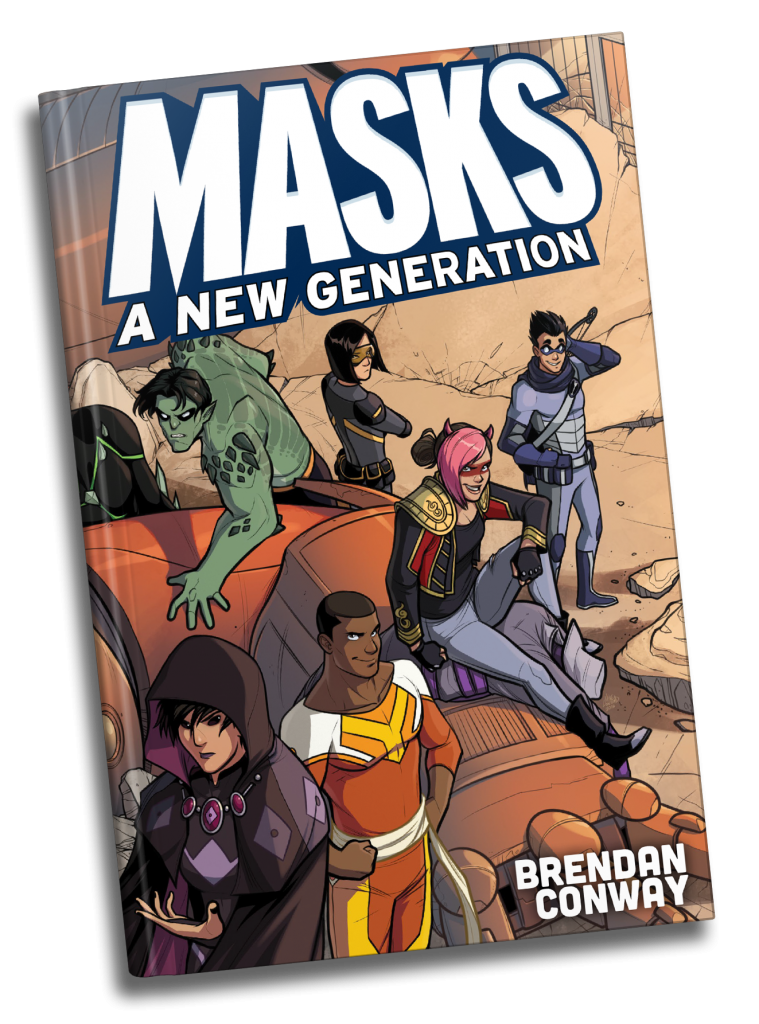
Masks is a Super-hero RPG by Magpie games. Its focus is on teenage superheroes (Teen Titans style) fighting the good fight right alongside teenage drama, living up to expectations, managing their own lives and who knows what. It’s “Powered By The Apocalypse”, which means it uses a system of Archtypes (“Playbooks”) all of which have a series of mechanical approaches to situations, as well as a general set of moves that’s available to everyone.
One of the things I like about PBtA games, especially for one-shots, is that because they’re class-based, and all the available options are right there, they’re fairly quick to get up to speed on for new players.
Structure & Scaffold
Armed with a system, I picked up the source books and read through them, thought about hero narratives and four-colour comics a bit, fixated on colour printing and the historical importance of certain colours, free associated, and then wrote things. This is the “How do you come up with your ideas” bit, and if I knew how it worked I’d bottle it for later. Anyway, I splurged forth some words in the right order, which became the pitch document, because editing is for other people:
The dust hasn’t fallen. Particles of the Lyceum’s infernal dust float in the air, turning the sky over Halcyon city a brilliant shade of violet. Champion Park is still torn up and large chunks of it are still floating gently between five and a hundred feet in the air.
But the city – and AEGIS – say the air is safe again now, and the civilians and the rest of the heroes of the city step out of their homes and bunkers to face a new world. A world without the Pinnacle League in it, as thousands saw the news broadcast where they were blasted through dimensions in a last ditch attempt to stop the Lyceum’s monsters from rising.
They’ll be back, eventually.
Probably? Yes. Certainly.
But it’s the beginning of the Summer Holidays, and things are weird, even for Halcyon.
Sadly, we’ve got some bad news for the beleaguered citizens:It’s gonna get weirder very shortly.
Inherent Violets, Pitch Document
I thing I often think about with regard to fictional universes is whether they function without the main character. It’s not a positive or negative attribute of a universe, but an interesting thought process. The universe of Rick & Morty functions without either of them, the characters would probably live easier lives, but schools function, things exist. People have relationships to each other, and events happen, without the title characters needing to be there. Everything in Doctor Who is defined by the presence of absence of the Doctor. Gotham generally revolves around Batman, either in his actions or absense. There are examples where this isn’t true (Torchwood might prove me wrong about the Doctor, but I only saw season one; Harley Quinn is an example of Gotham not needing Batman, while the series Gotham is pretty much the opposite).
What happens to a Superhero city when the main Superheroes are smeared across twelve dimensions? The answer is, in this case, a story that’s not about those heroes.
It’s about these ones.
There’s only so far I can go with a basic pitch document. I drew up a structure document, divided it into three acts, and put in a vague superstructure to hang a plot off, which I’ve uploaded.
A lot of this is just random jelly thrown against a wall, but it gives me some shapes to put some antagonists into, though who and – more importantly – why is going to have to wait a bit.
Ground Zero
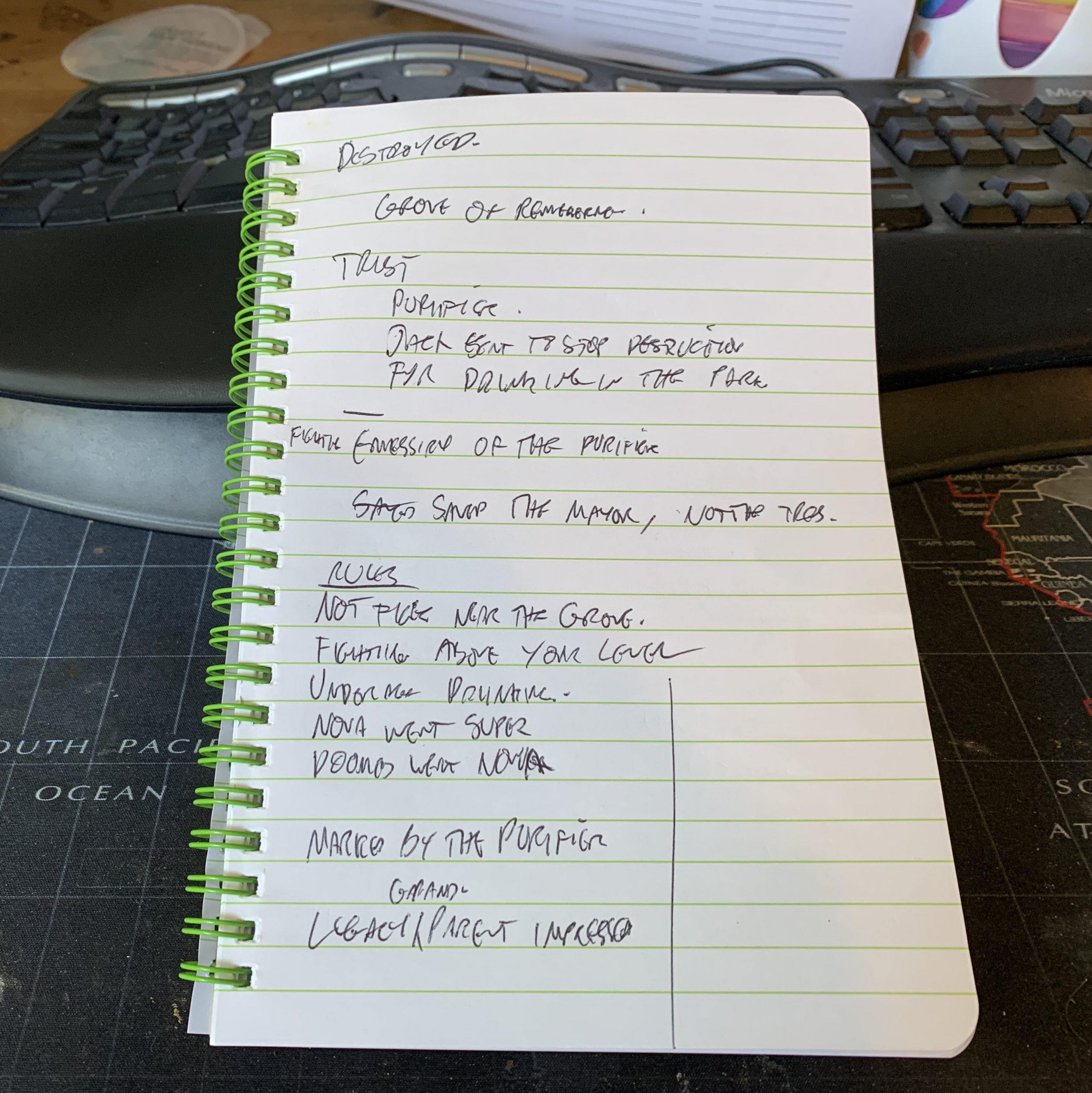
Next thing is to organise and run a Session Zero. Nearly all the players are people I’ve GM’d for before, which is handy as I already have an idea of things they like. So we did a session where we built the characters and the team in general. Out of this fell a couple of obvious antagonists, and with the character powers and motivations I made some notes on the themes and thesis for the game. Some of which even fit in the structure I came up with before-hand, though the middle act no longer holds its weight. Also from the S0 comes the lines and veils stuff, aspects and themes the players don’t enjoy playing with. So now I have the characters, some emotional beats to hit and conflicts to bounce on, a rough structure, and some notes about terrible things I can do. Next step, split this down into scenes and encounters – some more likely than others – and start writing things…
I’ve got a week between the S0 and the game, which is plenty of time, and I’ve got three days off that week, so there’s no chance I’m going to procrastinate enough not to do it…
Careful Planning
… yeah, I write nothing. I read the player backgrounds as they come in, and some ideas bounce around in my head. Saving the adult heroes goes to the back of the box for the moment – I don’t want the teen heroes to be outshone in their big battle – and before the session starts I fill in some rough drafts for the three act-level villains.
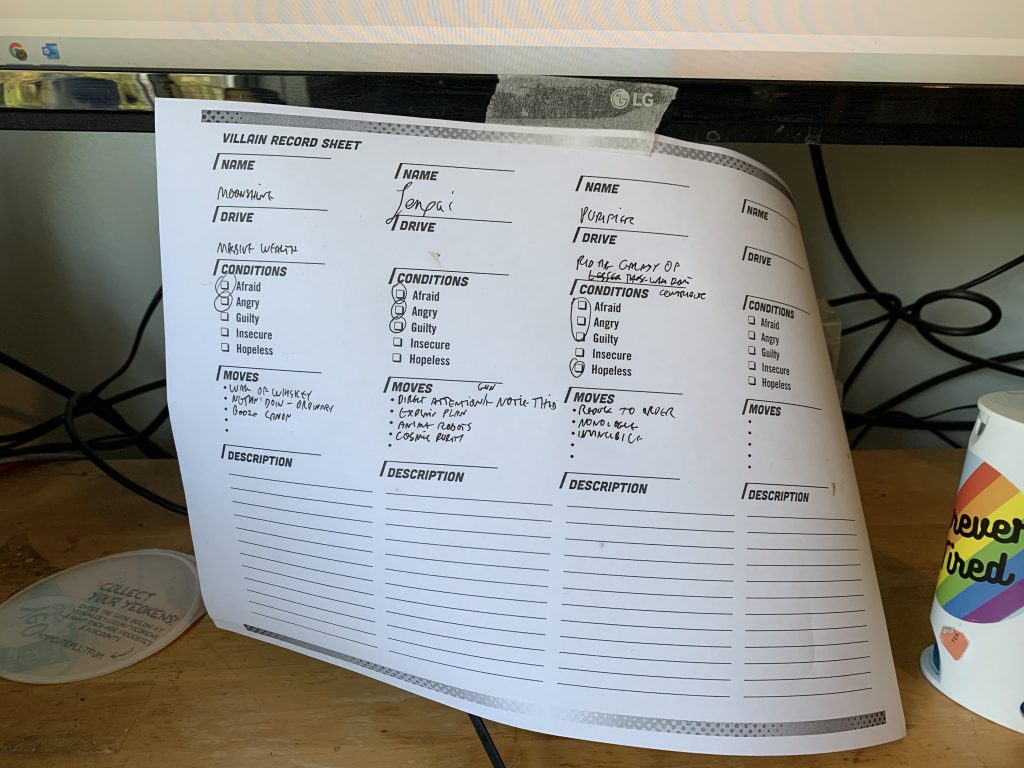
There’s a lot of enthusiasm at the virtual table, Robin’s put together some character art for most of the team, and the Discord chat has been simmering away with background detail for a bit, some of which I’ll use against them later.
We’re using Roll20 for game management – I’m used to the interface, and the character sheets for Masks in it are really nice and easy to use – and Google Meet for AV (Works, doesn’t require a download, and again I’m familiar with it). I’ve set up some handouts in the app with background on some of the NPCs and basic rules not on the character sheets. I’m not using it for maps, but I’ve got a selection of example images for mood setting and demonstration. Plus I’ve used a free logo designer online to draw up some symbols and logos for supers and organisations in the world, to help them pop a bit more.
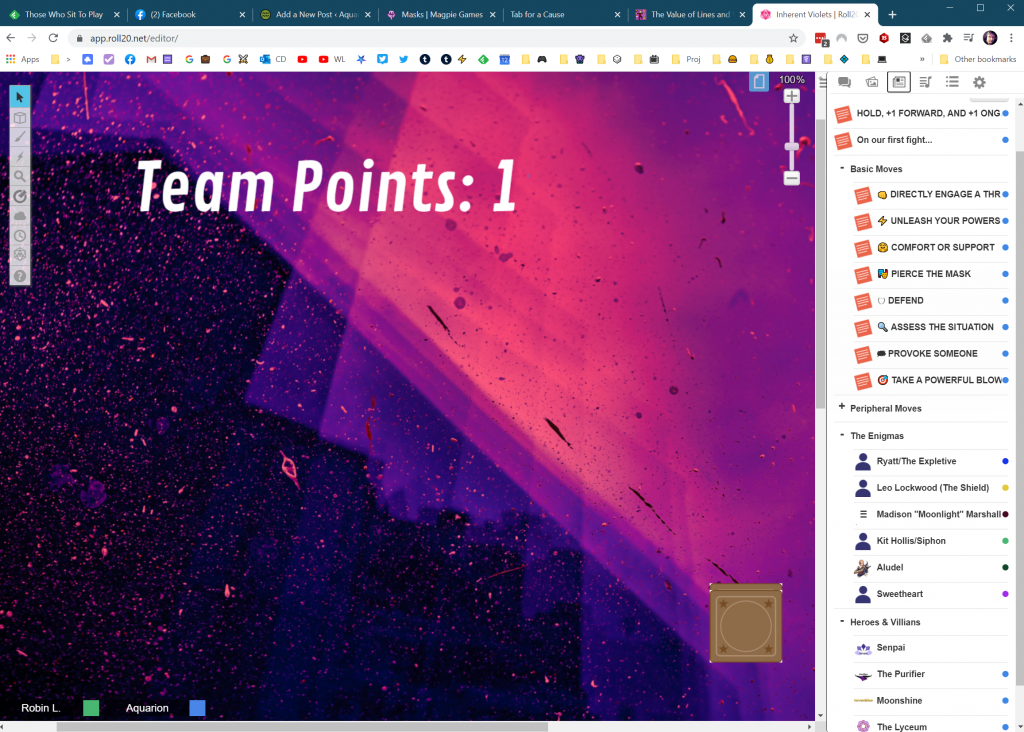
I’ve also created a Roll20 version of my X-Card modification, and set it up so any player can throw down a card onto the virtual table to signify distress. Added to this is an explanation, and that “x” in chat or me being able to physically see you panicking will also have the same effect. The idea is to play on character’s insecurities, not players.
Let The Game Begin
I give them the opening scenario – the pitch document from above, plus the coffee shop bank robbery from the structure doc, which has survived nearly intact. I give them Moonshine (Small Green from the doc) as a villain from the get-go, as defeating a minor villain is a good start for a team.
After that I’m mostly winging it. I’ve got the situation and the world status sorted from the structure document, and I can swing the spotlight towards characters and give them things and clues as they use their powers. The bank robbery led them to a drop-point for the stolen stuff, and a letter from the supervillain (because a couple of goons escaped and warned her). Kit the Doomed does some nice deduction on the paper, Maddy the werewolf’s super senses picked up the villain’s perfume and tracked it to her home in which they hacked her computer (there was a postit note for the password, but the username was harder, because they’d missed a clue earlier), found the masterplan and a link to the Doomed’s Nemesis, and a giant portal back to a 1960s government funded organisation that had a solution for when heroes when rogue: a city-spanning nuke-style missile that negated everyone’s powers, and a few special rings that would protect people from the blast.
By this point we were running long. I’d estimated about three to five hours including breaks, and we’d hit five before Act 3. I’d underestimated roleplay time by quite a bit – and Masks relies a lot (thematically and mechanically) on time to have discussions, arguments and earnest discussions with each other. Instead of putting the fight with the second level villain at the end of Act 2, I ended that at the emotional venting and release scene, and spent a break upscaling “Senpai”/Big Bad with some of her hoped-for patron’s powers and raising the epic level of the fight with her to be a final fight.
Happily a number of handy things fell in place right here, including an idea of how the depowering missile worked metaphysically and Senpai’s ultimate plan, and there was a big fight involving anime robots, time travel, heroic sacrifice, acceptance of fate and declarations of love, and everyone lived temporarily ever after.
Of course, not having got to the big Galactica fight, and leaving the big adult superheroes in limbo, as well as not touching quite a lot of background detail or relationships, there’s a whole lot unresolved. So I’ve kind of agreed to run a few more of it, leaving my ability to run self-contained one-shots at it’s record high of “once”.
